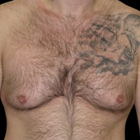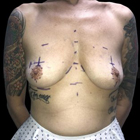Nipples seem a strange thing to have to replace, on the face of it. Sure, they play an enormously important role for a year or so when breastfeeding, obviously, but for most of the time, they’re pretty superfluous – and for many people, nipples are something that need to be covered up for the vast majority of the time.
For women who have undergone a mastectomy, however, nipples suddenly become extremely important, and many women who are undergoing breast reconstruction feel that not having them there can make their appearance feel incomplete. That’s where we can come in.
How does nipple reconstruction surgery work?
There are two ways of doing this: one way is to take skin from the reconstructed breast – usually in ‘arrow’ or ‘star’ shaped flaps – and remodelled into the required shape. An areola can also be reconstructed by removing a piece of darker skin from another part of the body (such as the inner thigh) and grafted onto the breast. The new graft can be re-coloured with tattooing.
In cases where just one nipple needs to be constructed – such as after a single mastectomy – a new nipple and areola can be created from removing half of the existing one.
The procedure is usually carried out under local anaesthetic, and it takes between 30 to 45 minutes. Your practitioner will mark the area where the new nipples will be, and take skin from that area. The area is then reshaped and sutured.
What happens after the nipple reconstruction procedure?
You will be given a nipple shield – a protective cover for the treated area – which you will be advised to keep on for three days. Once removed, the new nipple will probably appear bigger than normal. This is nothing to worry about: after the sutures are removed three weeks later, the nipple will flatten out and look more natural.
For more information, please consult our breast reconstruction procedures page.















